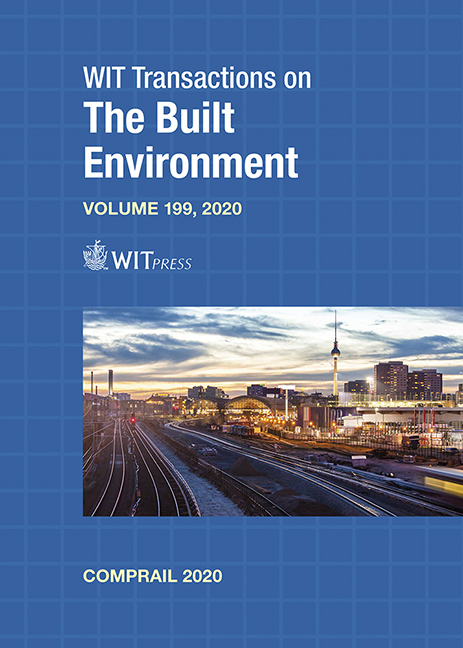PASSENGER BEHAVIOUR SIMULATION INSIDE TRAIN CAR COMBINED WITH TRAIN TRAFFIC SIMULATION
Price
Free (open access)
Transaction
Volume
199
Pages
13
Page Range
235 - 247
Published
2020
Paper DOI
10.2495/CR200221
Copyright
WIT Press
Author(s)
TAKETOSHI KUNIMATSU, HIRONORI MORIYA, HIROAKI KUSAKABE, RYOHEI YAMADA
Abstract
The aim of this research is to improve functions of train traffic simulation to evaluate train timetables. We want to improve reproducibility of train delay caused by passengers’ boarding and alighting. We also want to estimate boarding passengers’ discomforts caused by congestion or collision with other passengers inside the train car. In railway commuter lines in a big city like Tokyo, train delay due to congestion is one of the biggest problems. When the railway company makes a timetable, although it is important to set enough dwell time at stations to prevent train delay, there is no way to confirm the appropriateness of timetable alternatives in advance. In our previous researches, we have developed a train operation and passenger flow simulator, which can reproduce train congestion, train delay, and their interactions, like the “snowball effect”. However, the reproducibility of train delay in the simulator is not enough, because dwell time necessary for boarding and alighting is different, along with position of each passenger inside train car. In this research, we proposed a simulation method of passengers’ movements to estimate the time necessary for boarding and alighting. The method can consider each passenger’s shortest walking path towards the train door and their target position inside the train car, as well as passengers who temporarily alight the train, in which they disturb other alighting passengers. The method also realizes short calculation time enough for evaluating a whole timetable composed of a combination of many trains, stations, and doors. We conducted test calculations for the different movements of passengers. We compared the estimated time for boarding and alighting by the simulator, with the actual dwell time and estimated time by existing method by using a regression formula. As a result, we conclude that the proposed method can estimate each passenger’s behaviour in detail without decreasing reproducibility of train delay.
Keywords
train traffic simulation, passenger’s behaviour, delay, dwell time, shortest path search





